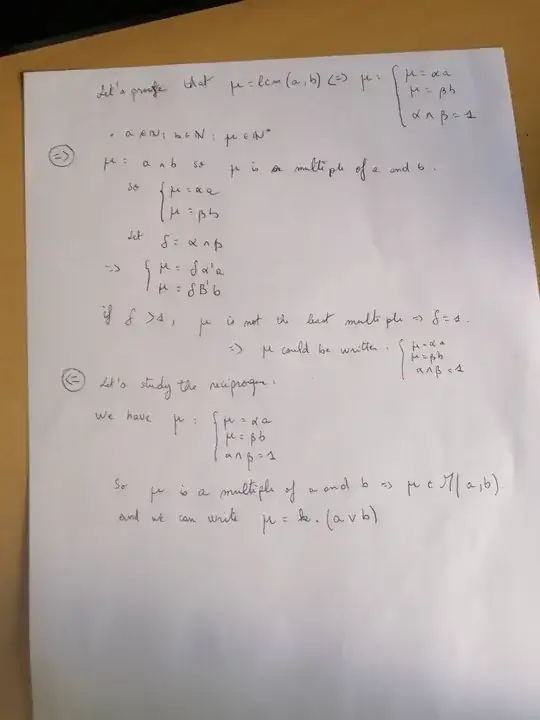This answer proves the theorem below using basic divisibility laws (by exploiting innate $\rm\color{#c00}{duality}$).
Theorem $\ $ If $\,\ a,b\mid m\,\ $ then $\ \displaystyle \frac{m}{{\rm lcm}(a,b)} \,=\,\gcd\left(\frac{m}a,\frac{m}b\right),\ $ i.e. $\ \color{#c00}{{\rm lcm}(a,b)' = \gcd(a',b')}$
$\begin{align}{\rm We\ seek}\ \ m = {\rm lcm}(a,b) &\iff a,b\mid m\ \ \&\ \gcd\left(\dfrac{m}a,\dfrac{m}b\right) = 1,\ \ \text{which by the above is}\\[.3em]
&\iff a,b\mid m\ \ \&\ \ \dfrac{m}{{\rm lcm}(a,b)}\, =\, 1,\quad\ \ \ \text{which is clearly true.}
\end{align}$
Remark $ $ The linked proof using cofactor duality reveals your equivalence boils down to
${\rm lcm}(a,b) = m \iff {\rm lcm}(a,b)' = m',\ $ via $\ {\rm lcm}(a,b)' = \gcd(a',b') = \gcd(m/a,m/b)$
Alternatively $ $ we show: $ $ a common multiple $m$ of $\,a,b\,$ is least $\iff \gcd(m/a,m/b)=1$
Proof $\ $ If the gcd $= c> 1\,$ then $\,c\mid m/a,m/b\,$ so $\,a,b\mid m/c,\,$ therefore $m$ is not least. $ $ Conversely, if $m$ is not least then $\,m = c\ell\,$ for $\,\ell\,$ least, so the gcd $= (c\ell/a,c\ell/b) = c(\ell/a,\ell/b) > 1\,$ by $\,c>1$.
